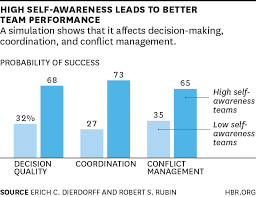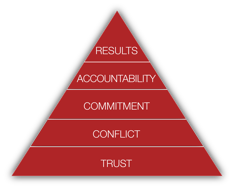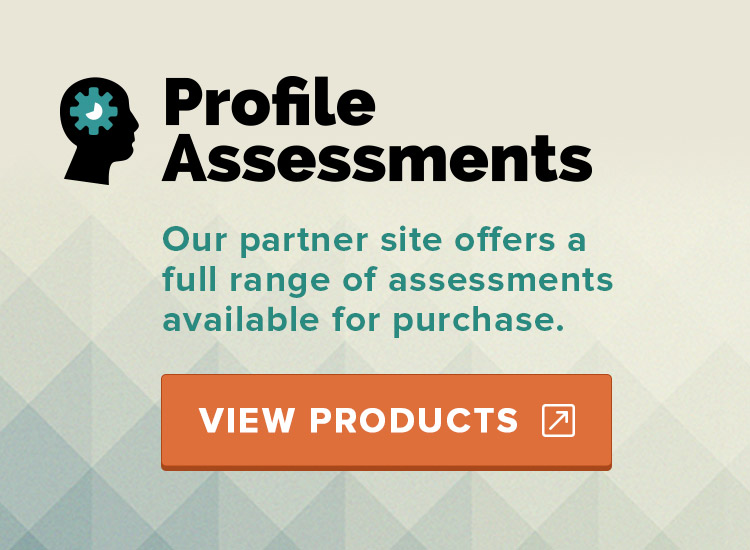5 Essential Strategies: Drive Employee Engagement & Motivate Teams
A Gallup study found disengaged employees cost companies a staggering $550 billion in lost productivity each year. On a more positive note, it has also been found that engaged teams are 43% more productive than others.
What can leaders do to increase energy and motivation across teams leading to higher levels of engagement? With today’s fast-paced workplace, it is easy to move into impersonal autopilot versus proactively managing and promoting a positive environment. Get off the treadmill and take a moment to pause, focus, and clear out the distractions. Commit to putting these five essential strategies into practice and engage your team.
#1: Increase Awareness of Self and Others Across the Team 
Emotional intelligence is a key driver in how team members show up to the workplace. Leaders that invest in bringing the team together with a communication assessment provide an invaluable experience to drive personal and social awareness that establishes trust and respect.
Daniel Goleman, bestselling author of Emotional Intelligence, summarizes the importance of emotional maturity in the workplace:
- Being Self-Aware: Understanding our emotions and recognizing a feeling as it happens promotes intentional communication and respect in the workplace.
- Managing Emotions: Increased awareness of our emotions helps us to handle difficult situations in ways that promote connection across a team. Managing our emotions effectively provides the opportunity to respond thoughtfully versus reactively which can often derail productive communications.
- Feeling Empathy: Understanding others and recognizing their emotions gets us out of our heads and puts the focus on listening. When we are mindful in our interactions, we are able to deliver more thoughtful responses.
- Increasing Communication Skills: Awareness and self-reflection promotes healthy and positive interactions which creates the foundation for increased engagement.
#2: Build Trust within the Team: Acknowledgement vs Recognition
Edelman’s Trust Barometer with results from 31,000 respondents in 26 markets around the world reports that only 18% of those surveyed trust business leaders to tell the truth. That’s only marginally above government officials who come in at 13%. And in a survey of 1000 American Executives, 65% say a better boss would make them happy. What can leaders do to build trust and increase their effectiveness within the company?
A simple shift with how we interact with others can create an environment where employees: become more engaged, increase personal performance, and have a positive impact on the level of trust they feel toward the boss. A powerful process is to practice acknowledgement – not to be confused with recognition. It’s less about what someone does and more about who they are. In doing so, leaders have the opportunity to create a culture of appreciation. What’s the difference between acknowledgement and recognition?
A great example of acknowledgement: “Katherine, the positive energy you bring to the team is so effective. Team members get excited about a project and begin to focus on the possibilities.”
Recognition: “Katherine, thanks for your extra effort on the Thermal project. The time you spent on the marketing plan made a difference and helped us secure the client.”
Remember, it’s less about what someone does and more about who they are. In the acknowledgement example, the leader is a focusing on what Katherine as a person brings to the team versus in the recognition example, the focus is on the task at hand.
This doesn’t mean that recognition is not a good thing. The point is that a mix of both acknowledgement and recognition creates meaning for employees and builds trust. It’s the human side of doing business and taking the time to slow down and interact in an intentional and mindful way.
#3: Seek to Understand
After working with teams for more than twenty years, we have found that more often than not, leaders fall short in their ability to Seek to Understand. Their intentions are always good as they look for ways to engage the team and increase trust. But when push comes to shove, it is a challenge for many leaders to remain quiet and listen to what their team has to say. The pressure to produce short term results hampers the ability to remain patient and allow the team to lead the way. When a leader jumps in and takes over, the dynamics of the team have shifted from team members feeling like what they have to share is valued to deferring to the leader.
It’s natural as a leader to have that urge to jump in and take control. Or, to cut off a team member because your idea is bubbling up and seems like the way to go. This is why Strategy #1: Increasing Awareness and Emotional Intelligence is so critical to effective teamwork. Try this: In your next team meeting, tee things up and then let the team drive the dialogue (of course you may need to manage tangents to remain on track) but the intent is to get out of your head, focus on each team member as they speak, and resist the urge to jump in and take over. Pay attention to what you are feeling as this happens. Are you distracted by what you think would be a good solution? Do you have the urge to jump into the conversation and promote your ideas? This awareness will provide insight into what your natural tendencies may be and how to manage communication in an effective and productive way that promotes a culture of ‘being heard and understood’.
#4 Promote the Principles of Great Feedback
The power of our words has the opportunity to create a meaningful connection. How one delivers feedback can either energize and motivate or disengage employees. Here are some examples of providing effective feedback:
- Be specific in what you are recognizing. “I can always count on you to meet your deadlines.”
- Use “I” messages. Instead of saying “You need to get to meetings on time,” say, “I would appreciate it if you would be on time to meetings.”
- Focus on behavior, not on personality or personal traits. Instead of saying, “Sometimes you can be too forceful in your approach,” say, “In the last few meetings, I noticed that you monopolized the conversation and didn’t allow others the opportunity to respond.”
- Don’t forget to provide positive feedback. It’s easy to focus on what needs to be improved. Take the time to let others know what is working. It goes a long way in motivating employees to do their best.
#5 Drive Towards Peer Accountability
When a strong foundation of communication has been created within a team, this can increase the ability of team members to hold each other accountable in a respectful way. When everyone is committed to the same clear actions and goals, the team understands what everyone is doing and what is expected of each team member. This clarity makes it easier to hold one another accountable. However, this can still be challenging…. Many people are uncomfortable pointing out other peoples’ unproductive behaviors.
The Five Behaviors of a Cohesive Team assessment provides teams insightful feedback from the team on how they handle Accountability. Many teams are challenged with putting accountability into action. Holding teammates accountable requires a willingness to provide direct feedback. Some people are uncomfortable providing feedback because they haven’t had much opportunity to do so or there is a low level of trust within the team. As a leader, it is important to create a dialogue that explores accountability within the team. Using the Five Behaviors of a Cohesive Team assessment is an effective way to engage the team in meaningful dialogue that promotes peer accountability.
Key Takeaways:
Leaders that follow these 5 Essential Strategies: Drive Employee Engagement & Motivate Teams, leads to creating a culture of TRUST within teams and across organizations. Team members feel respected, a sense of true collaboration is established, and there is a strong commitment to action that drives results.
To make this happen, it is critical that a foundation of communication and understanding is created. Invest in your team with a foundation building assessment that provides an on-going platform to enhance communications and engagement. To learn more about the possibilities of assessments, visit the Corporate Teams partner website at: www.ProfileAssessments.com.
